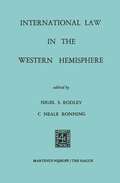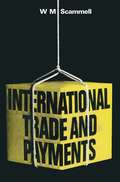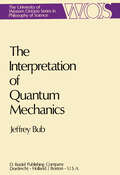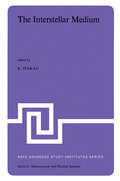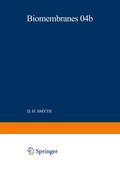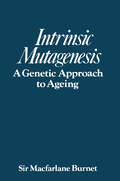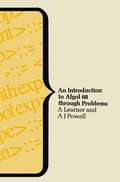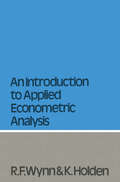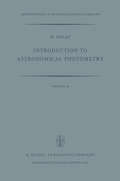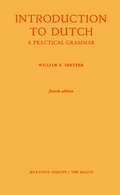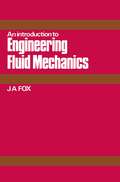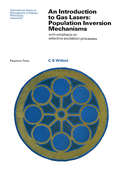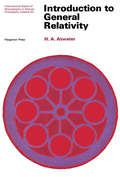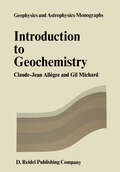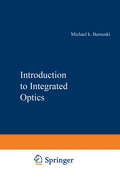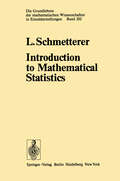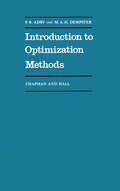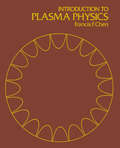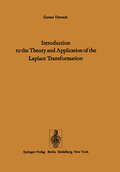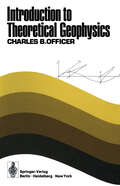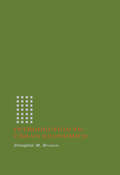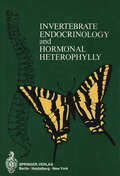- Table View
- List View
International Law in the Western Hemisphere
by Nigel S. RodleyThe essays and commentaries in this collection were presented at a Con ference on Problems of International Law in the Western Hemisphere, the Second Conference on Problems of Regional International Law under the joint sponsorship of the American Society of International Law and the Graduate Faculty of the New School for Social Research, April 2 & 3, 1971. Contributors have been given the opportunity to revise their papers since their original presentation. The editors acknowledge with gratitude the important contributions made by the Chairmen of the respective panels, namely, Professor Louis Henkin of Columbia Law School (Water Resources Panel), Professor Richard B. Lillich of the University of Virginia Law School (panel on Intervention) and Dr. Egon Schwelb of the United Nations (Human Rights Panel). The assistance of the Graduate Faculty of the New School for Social Research in the organization of the conference and that of the New York University Center for International Studies in the editing of these papers have been indispensable. We wish to make particular mention of the unstinting secretarial support of Ms. Donna Welensky and Ms. Judith Chazen. Certain problems would have been insuperable without the critical (in all senses) aid provided by Lyn Rodley. . The descriptions of contributors are those that obtained at the time of the conference. Since then, Professors Rovine and Rodley have moved to new pastures, the former to the Department of State's Office of the Legal Adviser, the latter to Amnesty International, while Dr.
The Interpretation of Quantum Mechanics (The Western Ontario Series in Philosophy of Science #3)
by Jeffrey BubThis book is a contribution to a problem in foundational studies, the problem of the interpretation of quantum mechanics, in the sense of the theoretical significance of the transition from classical to quantum mechanics. The obvious difference between classical and quantum mechanics is that quantum mechanics is statistical and classical mechanics isn't. Moreover, the statistical character of the quantum theory appears to be irreducible: unlike classical statistical mechanics, the probabilities are not generated by measures on a probability space, i. e. by distributions over atomic events or classical states. But how can a theory of mechanics be statistical and complete? Answers to this question which originate with the Copenhagen inter pretation of Bohr and Heisenberg appeal to the limited possibilities of measurement at the microlevel. To put it crudely: Those little electrons, protons, mesons, etc. , are so tiny, and our fingers so clumsy, that when ever we poke an elementary particle to see which way it will jump, we disturb the system radically - so radically, in fact, that a considerable amount of information derived from previous measurements is no longer applicable to the system. We might replace our fingers by finer probes, but the finest possible probes are the elementary particles them selves, and it is argued that the difficulty really arises for these.
The Interstellar Medium: Proceedings of the NATO Advanced Study Institute held at Schliersee, Germany, April 2–13, 1973 (Nato Science Series C: #6)
by K. PinkauIn recent years it has become apparent that con tributions to our knowledge about the interstellar medium are made by practically all forms of astronomy ranging from radio- to gamma ray observations, and from cosmic ray measurements. It was thus thought fruitful to arrange for an interdisciplinary meeting of astron omers from the various fields of investigation, and of high energy astrophysicists. This meeting took place at Schliersee (Bavaria) from April 2 to 13, 1973. Lectures and some of the discussions held during that Advanced Study Institute are reproduced here. unfortunately, no manuscripts of the two lectures about infrared and cosmic ray observations were re ceived and these are thus not available here. However, it was thought to be more important to proceed now with the publication. The organisers are very grateful to Miss H. Eichele for her technical help during the meeting. The or ganisation of the Institute and the publication of the proceedings would have been impossible without the very great efforts and help of Mrs. M. Brunner and Mrs. D.Preis. I would also like to express my gratitude to my col leagues K.W. Michel and S. Drapatz for their many con tributions towards the success of the meeting.
Intestinal Absorption (Biomembranes #4B)
by D. H. SmythIt might be asked if there is a need for yet another large review on Intestinal Absorption, and the answer is that this is still a rapidly expanding field of interest both from the medical and scientific points of view. There is ample evidence for this in the number of papers which continue to be published, and the bul letin on Intestinal Absorption issued by the Biomedical Infor mation Project of the University of Sheffield lists about 150 titles per month, and there is still no sign of any diminution in this rate. There are in fact so many papers that those interested in intestinal absorption have to be specialists in one particular field, but must at the same time be aware of the general deve lopments in the subject as a whole. The last major review was the excellent volume in the American Handbook published in 1968, already six years ago, and indeed a number of the con tributors to that volume have taken part in the present work. Some observations made in the introduction to a volume of the British Medical Bulletin on Intestinal Absorption some years ago are still pertinent. Progress in the experimental sciences is not continuous, but proceeds in phases of rapid expansion alter nating with periods of slower growth.
Intrinsic mutagenesis: A genetic approach to ageing
by Burnet MacFarlaneThis book is something which almost accidentally has developed very differently from how it was initially planned. The intention was to elaborate the part played by the immune system in ageing with the role of the thymus as central theme. It was to be essentially an expansion of a lecture I gave in 1970 and would inevitably have been concerned with much the same material as Walford's book, The Immunologic Theory of Aging, though from a different slant. What changed its character arose from a series of attempts to find logical connection between two findings that most gerontologists regard as axiomatic: that the lifespan of a mammal is genetically determined, and that the actual process of ageing is an accumulation of genetic error, of somatic mutations. It is possible that the connection is so indirect, circuitous and multiform that generations of detailed and unattractive research will be needed to elucidate it, or, more likely, the whole matter discarded as a non-problem. But a more inspiring approach does seem possible. The working hypothesis, which halfway through its writing became the new central theme of the book, arose when I was a member of a committee appointed by the Australian Academy of Science at the request of the Australian Government to advise on the danger from French nuclear tests in the South Pacific.
Introduction to Astronomical Photometry (Astrophysics and Space Science Library #41)
by M. GolayThe material given in this 'Introduction to astronomical photometry' is the subject matter of a lecture at the University of Geneva. It is, therefore, intended for those students, physicists or mathematicians, who have completed their bachelor's degree or diploma, and are intending to work for their Ph.D. in astronomy. We assume then the elementary ideas of astrophysics, magnitude, colour index, spectral classes, luminosity classes, gradient, atmospheric extinction are already known. The student may find it useful to re-read the work of Schatzman [1], Dufay [2] and Aller [254] before embarking upon the study of this 'Introduction to astronomical photometry'. It is not our aim in this book to deal with every aspect of stellar photometry. On the contrary, we shall restriet ourselves to looking at subjects ofwhich knowledge seems to us essential for someone who has to use photometrie quantities in his astronomical research. We are, therefore, keeping the interests of the photometrie measurements user partieularly in mind. We shall only discuss very superficially the technical prob lems and reduction methods for atmospheric extinction. These problems are dealt with very clearly in Astronomical Techniques [3]; the first by A. Lallemand, H. L.
Introduction to Dutch: A Practical Grammar
by William Z. ShetterFirst edition This grammar arose from the need for a concise presentation of the essentials of the Dutch language which could be used both for independent home study and in groups or classes under formal instruction. With the former aim in mind, the explanations have been made as self-explanatory as possible, and a complete key to the exercises has been provided in an appendix. In the interest of simplicity and ease of reference and review, each grammatical topic is discussed as fully as practicable in one place, and an effort has been made to include only one major grammatical feature in any one chapter. But since a solid foundation can more effectively be achieved through study under trained supervision or with a native speaker of the language, the presentation has also been made adapt able to this type of study. The brief fill-in exercises in each lesson provide a model for any amount of drill, and the dialogues and readings included at irregular intervals as well as the review selec tions placed after every few chapters can provide the necessary added practice in supervised instruction. Help should in any case be sought with the pronunciation, the principal stumbling-block in the way of either independent or supervised study.
Introduction to Feynman Diagrams: International Series of Monographs in Natural Philosophy
by S. M. BilenkyIntroduction to Feynman Diagrams provides Feynman diagram techniques and methods for calculating quantities measured experimentally. The book discusses topics Feynman diagrams intended for experimental physicists. Topics presented include methods for calculating the matrix elements (by perturbation theory) and the basic rules for constructing Feynman diagrams; techniques for calculating cross sections and polarizations; processes in which both leptons and hadrons take part; and the electromagnetic and weak form factors of nucleons. Experimental physicists and graduate students of physics will find value in the book.
Introduction to Gas Lasers: With Emphasis on Selective Excitation Processes
by Colin S. WillettIntroduction to Gas Lasers: Population Inversion Mechanisms focuses on important processes in gas discharge lasers and basic atomic collision processes that operate in a gas laser. Organized into six chapters, this book first discusses the historical development and basic principles of gas lasers. Subsequent chapters describe the selective excitation processes in gas discharges and the specific neutral, ionized and molecular laser systems. This book will be a valuable reference on the behavior of gas-discharge lasers to anyone already in the field.
Introduction to General Relativity: International Series of Monographs in Natural Philosophy
by H. A. AtwaterIntroduction to General Relativity is an introductory text on the concepts and modes of calculation used in general relativity. Topics covered range from Newton's laws of motion and the Galilean transformation to tensor analysis, equations of motion of free particles, electromagnetism, and gravitational fields and waves. Solutions of the field equations are also given. The emphasis is on the actual performance of relativistic calculations, rather than on mathematical rigor or exhaustive completeness. This volume is comprised of nine chapters and begins with an overview of the theory of relativity, which includes special relativity and general relativity. The discussion then turns to Newton's laws of motion and the Galilean transformation, electromagnetism and the Galilean transformation, and the Lorentz transformation. Subsequent chapters explore tensor analysis; equations of motion of free particles; gravitational fields and waves; relativity in cosmology; and unified theories and quantized theories of general relativity. The final chapter is devoted to Minkowski's coordinates and orthogonal transformations. This book will be a valuable resource for students of physics.
Introduction to Geochemistry (Geophysics and Astrophysics Monographs #10)
by Cl.J. Allègre G. MichardTO GEOCHEMISTRY by CLAUDE-JEAN ALLEGRE Department of Earth Sciences, University of Paris 7 and GIL MICHARD Department of Chemistry, University of Paris 7 D, REIDEL PUBLISHING COMPANY DORDRECHT-HOLLAND / BOSTON-U. S. A. INTRODUCTION A LA GEOCHIMIE First published by Presses Universitaires de France, Paris, 1973 Translated/rom the French by Robert N. Varney Library of Congress Catalog Card Number 74-83871 e-ISBN -13: 978-94 -010-2261-3 ISBN -13: 978-90-277-0498-6 DOl: 10. 1007/978-94-010-2261-3 Published by D. Reidel Publishing Company, P. O. Box 17, Dordrecht, Holland Sold and distributed in the U. S. A. , Canada, and Mexico by D. Reidel Publishing Company, Inc. 306 Dartmouth Street, Boston, Mass. 02116, U. S. A. All Rights Reserved Copyright © 1974 by D. Reidel Publishing Company, Dordrecht, Holland No part of this book may be reproduced in any form, by print, photoprint, microfilm, or any other means, without written permission from the publisher TABLE OF CONTENTS PREFACE IX PREFACE BY THE TRANSLATOR XI CHAPTER 1 / THE EARTH AS A CHEMICAL SYSTEM 1 1. 1. The Earth within the Solar System 1 1. 2. The Scale of Time 1 1. 3. The Overall Chemical Composition of the Earth, the Solar System, and the Universe 2 1. 4. Chemical Compounds in the Solar System: Cosmological Minerals 5 1. 4. 1. Simple Molecules 6 1. 4. 2. Simple Solids 6 1. 4. 3. Silicates 6 1. 4. 4. Carbon Polymers 6 1. 4. 5. Fe-Ni Alloys 6 1. 5.
Introduction to Integrated Optics
by Michael BarnoskiThe material presented in this volume is based on a series of lectures presented at an annual short course entitled "Integrated Optics" sponsored by the University of Cali fornia, Santa Barbara, in March of 1973. Each chapter has been authored by the individual lecturing on the particular subject matter con tained in that chapter. The primary intent of this book is to pro vide the students with a written version of the lecture material. The text treats a large variety of the basic structures and analysis techniques currently being employed in the rapidly growing area of technology termed "Integrated Optics." The volume contains both material that has previously been published in scientific journals and material which has not been published elsewhere. Since the field of integrated optics is in a stage of rapid expansion, a complete coverage of all the experimental results is difficult. As a result the emphasis is placed on the funda mental theoretical ideas and experimental results. The editor gratefully acknowledges the con tributing authors and the institutions with which they are associated for their wholehearted cooperation in the preparation of this book. Particular thanks are extended to the Hughes Research Laboratories, a division of the Hughes Aircraft Company.
Introduction to Mathematical Statistics (Grundlehren der mathematischen Wissenschaften #202)
by L. SchmettererIntroduction to Optimization Methods (Chapman and Hall Mathematics Series)
by P. AdbyDuring the last decade the techniques of non-linear optim ization have emerged as an important subject for study and research. The increasingly widespread application of optim ization has been stimulated by the availability of digital computers, and the necessity of using them in the investigation of large systems. This book is an introduction to non-linear methods of optimization and is suitable for undergraduate and post graduate courses in mathematics, the physical and social sciences, and engineering. The first half of the book covers the basic optimization techniques including linear search methods, steepest descent, least squares, and the Newton-Raphson method. These are described in detail, with worked numerical examples, since they form the basis from which advanced methods are derived. Since 1965 advanced methods of unconstrained and constrained optimization have been developed to utilise the computational power of the digital computer. The second half of the book describes fully important algorithms in current use such as variable metric methods for unconstrained problems and penalty function methods for constrained problems. Recent work, much of which has not yet been widely applied, is reviewed and compared with currently popular techniques under a few generic main headings. vi PREFACE Chapter I describes the optimization problem in mathemat ical form and defines the terminology used in the remainder of the book. Chapter 2 is concerned with single variable optimization. The main algorithms of both search and approximation methods are developed in detail since they are an essential part of many multi-variable methods.
Introduction to Plasma Physics
by Francis F. ChenThis book grew out of lecture notes for an undergraduate course in plasma physics that has been offered for a number of years at UCLA. With the current increase in interest in controlled fusion and the wide spread use of plasma physics in space research and relativistic as trophysics, it makes sense for the study of plasmas to become a part of an undergraduate student's basic experience, along with subjects like thermodynamics or quantum mechanics. Although the primary purpose of this book was to fulfill a need for a text that seniors or juniors can really understand, I hope it can also serve as a painless way for scientists in other fields-solid state or laser physics, for instance to become acquainted with plasmas. Two guiding principles were followed: Do not leave algebraic steps as an exercise for the reader, and do not let the algebra obscure the physics. The extent to which these opposing aims could be met is largely due to the treatment of a plasma as two interpenetrating fluids. The two-fluid picture is both easier to understand and more accurate than the single-fluid approach, at least for low-density plasma phe nomena.
Introduction to the Theory and Application of the Laplace Transformation
by G. DoetschIn anglo-american literature there exist numerous books, devoted to the application of the Laplace transformation in technical domains such as electrotechnics, mechanics etc. Chiefly, they treat problems which, in mathematical language, are governed by ordi nary and partial differential equations, in various physically dressed forms. The theoretical foundations of the Laplace transformation are presented usually only in a simplified manner, presuming special properties with respect to the transformed func tions, which allow easy proofs. By contrast, the present book intends principally to develop those parts of the theory of the Laplace transformation, which are needed by mathematicians, physicists a,nd engineers in their daily routine work, but in complete generality and with detailed, exact proofs. The applications to other mathematical domains and to technical prob lems are inserted, when the theory is adequately· developed to present the tools necessary for their treatment. Since the book proceeds, not in a rigorously systematic manner, but rather from easier to more difficult topics, it is suited to be read from the beginning as a textbook, when one wishes to familiarize oneself for the first time with the Laplace transforma tion. For those who are interested only in particular details, all results are specified in "Theorems" with explicitly formulated assumptions and assertions. Chapters 1-14 treat the question of convergence and the mapping properties of the Laplace transformation. The interpretation of the transformation as the mapping of one function space to another (original and image functions) constitutes the dom inating idea of all subsequent considerations.
Introduction to Theoretical Geophysics
by C. B. OfficerIt has been my intention in this book to give a coordinated treatment of the whole of theoretical geophysics. The book assumes a mathematical back ground through calculus and differential equations. It also assumes a reason able background in physics and in elementary vector analysis. The level of the book is commensurate with that of a senior undergraduate or first year graduate course. Its aim is to provide the reader with a survey of the whole of theoretical geophysics. The emphasis has been on the basic and the elementary. The expert in any one of the several disciplines covered here will find much lacking from his particular area of investigation; no apology is made for that. In order to treat all aspects in a coordinated manner, the simplest type of mathematical nota tion for the various physical problems has been used, namely, that of scalars, three-dimensional vectors, and the vector operators, gradient, curl, divergence, etc. It is appreciated that this elementary notation often may not be the most conducive to the solution of some of the more complex geophysical problems. The derivations are, in almost every case, carried through in considerable detail. Sometimes the particulars of the algebra and calculus have been omitted and relegated to one of the problems following the section. The emphasis has been on the physics of the derivations and on explaining the various physical principles important in geophysics, such as continuity, mixing, diffusion, conduction, convection, precession, wobble, rays, waves, dispersion, and potential theory.
Introduction to Urban Economics
by Douglas M. BrownIntroduction to Urban Economics offers a complete and self-contained coverage of urban economics. This book analyzes the economic rationale and growth and development of cities, theory and empirical analysis of urban markets, and problems and policies of urban economies. This text is divided into inter- and intra-urban analysis. Discussions on inter-urban analysis comprise Chapters 1 to 3 that include an introduction to urban economics, economic history of urban areas, and economics of urban growth. The rest of the chapters that cover intra-urban analysis describe the theories of urban markets, empirical tests of the theories, and implications of the empirical findings for policy decisions. This publication is valuable to students with a background in economic principles.
Invertebrate Endocrinology and Hormonal Heterophylly
by W.J. Burdetteull recognition of the important role that hormones play in the growth, F differentiation, and function of insects was preceded by rather advanced information about identity and action of mammalian hormones. However, extirpation and transplantation of endocrine glands in insects and segmental ligation of larvae gradually yielded knowledge about the location of endo crine cells in insects and led to labeling their hormonal product with appropriate names. The development of relatively sensitive assays permitted the separation of active extracts of the hormones associated with meta morphosis and quickened the pace of discovery. Finally, identification of structural formulae of natural hormones now has provided the means for detailed study of biochemical events with which they are associated. In the meantime, better interpretation of the mechanism for morphologic and functional effects of hormones in vertebrates has come about through knowledge of binding of hormones in target tissues, feed-back, and other mechanisms. There has been a prodigious increase in information recently, not only about the structure of molting and juvenile hormones, but also about their molecular action, as well as recognition of problems still posed by their of origin, and relation to genic derepression. biosynthesis, interactions, sites Discovery and study of phytohormones and analogs has added interest and amplified techniques for investigation.

